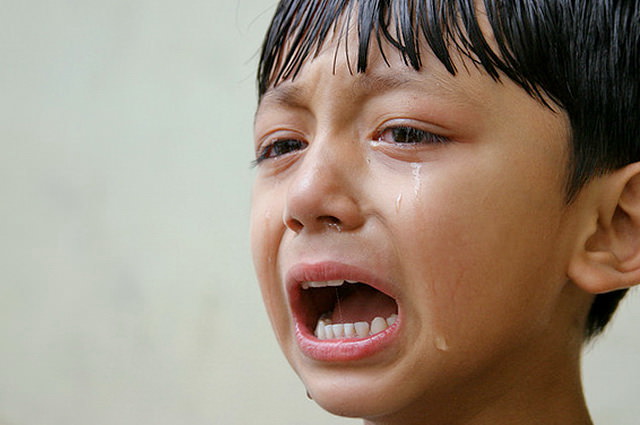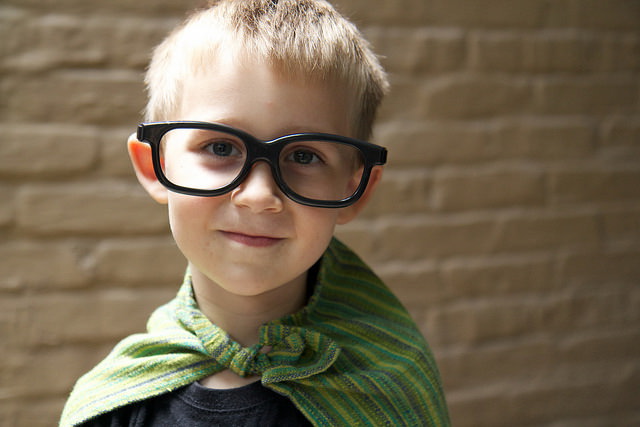
Troubleshooting Common Problem Areas in Children With Autism
When dealing with a child on spectrum, the presence of sudden or chronic behaviours that are aggressive, odd, or socially inappropriate can present challenges one may feel ill-equipped to understand and deal with. Being prepared ahead of time can help a great deal in managing these issues in the calm, logical way. The following questions and answers cover some of the most common problems that arise with the behaviour of children (and some adults) who have Autism Spectrum Disorder (ASD):
My child’s behaviour has changed suddenly; what should I do?
First off, have the child seen by a doctor. Children with ASD sometimes can’t identify and/or vocalize their feelings, so may not be able to express the pain caused by a medical condition that has arisen quickly, making it important to rule such out.
Once medical issues have been found absent, assess whether or not changes to the child’s routine or environment have happened recently. Remember that even small changes, such as re-arranging a room or changing lighting or shampoo brands, may upset someone with ASD and bring out “coping behaviours”.
My child doesn’t understand physical boundaries and tries to hug strangers; what should I do?
Remember that social boundaries are very challenging for someone with ASD to grasp; they quickly assume what is okay at home or with friends is okay as a general rule.
To combat this, try writing a “social story” (with pictures if possible) explaining why people hug friends and family, but not strangers. A comic strip style of format is often ideal for these.
Try to teach more appropriate ways of showing affection to strangers rather than just limiting the problem behaviour, as those with ASD should be encouraged to interact socially as much as possible/enjoyable. Suggest waving to strangers instead, for example, or holding the door open for them. Reward the child for practicing these alternate skills.
Consider conducting a general social skills “training course” for the child, explaining in story form why people greet each other in the ways they do, part as they do, etc.
My child gets very anxious during breaks and at lunch hour; how do I help her deal with this?
School break times often stress those with ASD because they are both unstructured time and often involve sensory overload (noise from many children playing, lots of movement).
Consider having a support worker stay with your child during these times and structure the break time around certain games each day to create a routine.
You can also look for special support groups at the school for those with ASD that focus on teaching children social skills in a way they can handle. This way the child both develops a peer network and receives structure and support, with someone on hand to help her troubleshoot her particular issues with social interaction.
Give your child methods for indicating her distress to staff if she can’t easily vocalize it, such as stress scales, so that staff know when it’s time for a “time out” from social situations. Likewise, teach your child healthy relaxation techniques to use during these breaks, such as listening to soft music or practicing deep breathing.
If breaks are still simply too overwhelming, seek permission from the school for your child to spend them in the library or computer room.

Autism Sensory Difficulties and How to Address Them
People with Autism Spectrum Disorder (ASD) typically have difficulty processing sensory information such as sounds, sights, and smells. This is usually referred to as having issues with “sensory integration”, or having sensory sensitivity, and is caused by differences in how the brain of a person with ASD understands and prioritizes the sensory information picked up by the body’s many sensory receptors. When this breakdown in communication becomes too intense, the person with ASD may become overwhelmed, anxious, or even feel physical pain. When this occurs, some with ASD may act out.
The over and under-sensitivity ASD people experience may affect some or all of the following seven senses:
Sight
Including seeing objects as darker than they really are, blurred central vision, having poor depth perception (resulting in clumsiness), and distorted or fragmented images.
Sound
Imbalanced hearing (hearing sounds only in one ear), may either enjoy loud noises or be very agitated by them, may have difficulty cutting out background noise (affecting concentration), sounds may be distorted. These difficulties may also contribute to balance issues.
Touch
A person with ASD may either crave touch (and not know how much to apply, such as holding a person too tightly) and have a high pain threshold, or shun touch (even common gestures of affection, such as hugs) and struggle with certain sensations, such as those produced by rough fabrics, hair brushing, etc.
Taste
Some with ASD may crave strong tasting foods (such as very spicy foods) or even go so far as to try to eat non-edible substances like Play Dough, while those who are hypersensitive to taste will shun all but the blandest foods, and may dislike foods with anything but a smooth texture.
Smell
Some people with ASD may have no sense of smell and remain unaware of strong odours (leading them to rely on oral cues; they may taste things to get a better sense of them), while others may find common smells (such as from deodorants, lotions, shampoos, and perfumes) too strong to bear. For this reason, they may be extremely averse to going to the bathroom.
Balance (‘vestibular’)
People with ASD may rock back and forth so as to get enough input on where they are situated, as they lack a sense of balance. They may have difficulties with sports, particularly anything gymnastic where the head is removed from an upright position. They may be more prone to car sickness than those who lack ASD.
Body awareness (‘proprioception’)
As people with ASD struggle to orient their bodies properly in space, they may stand too close to others, have a hard time navigating rooms or moving around obstructions (including people), experience difficulties with fine motor skills, or experience Synaesthesia (a condition where senses are “confused”, i.e. one will hear or taste a colour).

Asperger’s vs. High-Functioning Autism: Understanding the Difference
Autism is a very diverse condition, and as such, it is often referred to as being a “spectrum” disorder which encompasses many different types of disability, all of which can affect unique individuals differently. When it comes to distinguishing the various forms of “high functioning” autism, one can encounter challenges, as the level of disability is itself less obvious, and its impacts are therefore more subtle and hard to differentiate.
In particular, high-functioning autism (HFA) and Asperger’s syndrome (AS) may present quite similarly to an untrained eye, but retain important differences that are still being researched today; below, the difference between the two conditions is explained:
The primary difference between the two conditions is generally found in the area of language development (notably, those with Asperger’s syndrome usually do not experience delayed language development while young) but the differences go beyond this one area, and have been subject to a certain amount of debate and controversy over the decades.
History of the Autism Diagnosis
The term “autism” was originally coined in 1911 by psychiatrist Eugen Bleuler, and was at first meant to denote the social withdrawal and detachment that often accompanies schizophrenia (indeed, the word “autism” translates to “selfism”). Later, in the 1940s, when both American Leo Kanner and Austrian Hans Asperger were working on defining the childhood disorders they were treating, they came across the concept of autism in their research, and decided it was an apt description for the various symptoms they had been attempting to treat in children. Over time, Kanner realized these children were not actually experiencing schizophrenia, but rather something else, which he dubbed “infantile autism”. Asperger added onto this body of knowledge by ascertaining that some of the children referred to his child psychiatry clinic were suffering from a condition that had not been hitherto properly described, but which loosely fit what Bleuler had defined as autism (and which lacked the acute psychosis of schizophrenia). Kanner’s work was highly accurate and detailed for its time, and formed the cornerstone of future research into autism, particularly after his paper (published in the UK in 1943) gained widespread recognition in the English-speaking world.
Following Kanner’s paper, the diagnosis of ‘infantile autism’ came into popular use as the 1950s and 60s progressed, and Kanner’s work largely overshadowed Asperger’s, who remained mostly unknown outside Europe.
Over time, academics, along with Asperger himself, noted that Asperger’s and Kanner’s autism bore striking similarities. Judith Gould and Lorna Wing, in particular, contributed by conducting a revolutionary study in the late 1970s that demonstrated autism existed on a continuum. It was during this course of this study that the phrase “Asperger’s syndrome” was first used to describe a higher-functioning sub-group of the autism patients surveyed. Asperger’s came to be seen as a more “positive” diagnosis, with less social stigma attached to it, creating some controversy around the prevalence with which it was thereafter used.
Some debate still exists today around the four main areas of difference that separate Asperger’s syndrome from high-functioning autism:

What is Autism?
When the fifth edition of the Diagnostic and Statistical Manual of Mental Disorders (DSM-V) was released in May of 2013, “autism” was relegated from a separate disorder to fall under the umbrella of Autism Spectrum Disorders (ASD) which, in and of itself is vague but includes the following subcategories of autism: Childhood Disintegrative Disorder, Pervasive Developmental Disorder Not Otherwise Specified (PDD-NOS), Asperger’s Syndrome, and Autistic Disorder. Only recently has Rett Syndrome been included under the umbrella of ASD.
According to the Centers for Disease Control, autism is five times more likely to affect boys (1 out of 42) than girls (1 out of 189). Autism does not discriminate against color or race – it affects people world-wide. Autism is the fastest growing developmental disability, it is estimated that 1 out of 68 newborn babies in the USA has autism. In 2000 the number was 1 in 150 births.
There is a sweeping wide misconception that autism develops around the age of three. In truth, signs of autism begin to present themselves around the age of three.
What’s the difference?
If autism develops around the age of three then one might argue that a trigger exists that caused it. In the late 1990s the patsy was childhood vaccinations. The general public became so frightened by the growing autism epidemic they laid blame anywhere they could. It is important to note that this has been debunked and disproven through studies conducted around the world, but sadly not before cases of measles, mumps, rubella, and polio made a comeback because of this dangerous myth.
The age of three seems to be the magic number for most, but rather than “developing” autism, the symptoms actually begin to present themselves. Prior to the “symptomatic age” children are home with familiar surroundings: house, room, parents, relatives, sights, sounds, etc. Between the age of three and four the child is placed in social situations: play dates and pre-school. They are inundated with new sounds, people, situations, and locations. “Suddenly” the parent of the autistic child realizes that their baby is different.
Like the spectrum, autism is very hard to pinpoint because everyone is unique in their level of disability or giftedness – and any combination thereof.
Sensory overload often causes tantrums or lashing out, general misbehavior, symptomatic ADHD, excessive rocking or fiddling of the hands.
It is best to remember that people are born on the autism spectrum. They do not go out of their way to be a problem but they do lack social, behavioral, and coping skills. Depending on where they are on the scale, people with autism range from severely challenged to highly gifted. Many people would be surprised to know that some people with autism have very high IQs but often thought of as slow because of their lack of social etiquette or “street smarts”. On the other hand, there are cases of autism that are debilitating enough where they need lifelong care.

